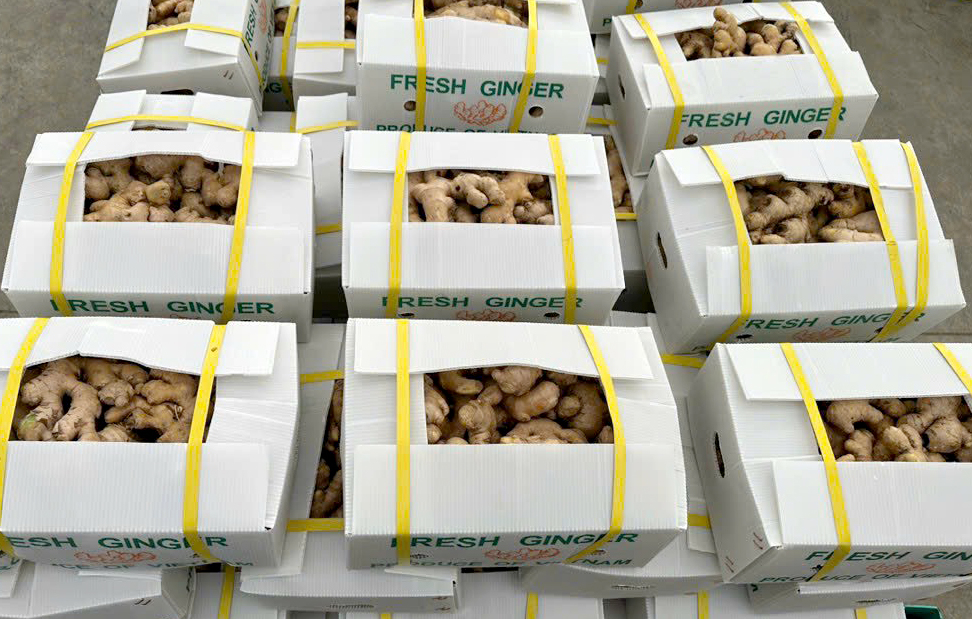November 23, 2025 | 15:26 GMT +7
November 23, 2025 | 15:26 GMT +7
Hotline: 0913.378.918
November 23, 2025 | 15:26 GMT +7
Hotline: 0913.378.918

Organic black pepper from a cooperative in Binh Phuoc. Photo: Son Trang.
According to a statistic from FAO, the global cultivation area for spice in 2020 reached approximately 7.21 million hectares across 123 countries. Among these, India accounted for the largest area at 47%, followed by Indonesia at 14%, Ethiopia at 7%, China at 7%, and Vietnam at 3%.
Despite ranking fifth in terms of spice cultivation area, Vietnam ranks third in terms of spice exports. Information from the Vietnam Pepper and Spice Association (VPSA) reveals that global spice exports have shown a consistent growth trend over recent years, increasing from around 8 billion USD in 2011 to about 13.45 billion USD in 2021. The primary supply sources come from major producing countries including India, China, Vietnam, Indonesia, and Madagascar. These five countries contribute over 54% of the total export value. Specifically, India accounts for 20% of the global spice trade value, China 13%, Vietnam 11%, Indonesia 6%, and Madagascar 5%.
Within the current spice trade basket, the largest shares belong to chili peppers (20%) and black pepper (16%). Following are ginger (9%), cinnamon (8%), and cardamom (8%). These top 5 spice varieties constitute over 61% of the total global spice export value in 2021.
Vietnam's advantage in the spice sector lies in the fact that among the top 5 spice varieties, the country holds a competitive edge in production and exports of four products: chili peppers, black pepper, ginger, and cinnamon. In the case of black pepper, Vietnam has consistently been the world's largest producer and exporter for many years. As for cinnamon, Vietnam also takes the lead in both production and export with an annual output of 45,000 tons.

Vietnamese fresh ginger. Photo: Son Trang.
Global demand for spices is continuing to rise due to many types of spices having health-supporting, immune-boosting, and disease-fighting properties. For instance, the curcumin extract from turmeric reached a trading value of approximately 58.4 million USD in 2019, and it is forecasted to have an annual growth rate of over 10% until 2027.
The exceptional attributes of essential oils extracted from various spice plants are helping replace synthetic flavor and color additives in the food and beverage industry. This is promising for the market growth of spice-derived essential oils. The global market's trade value reached 1.2 billion USD in 2019 and is projected to reach 1.7 billion USD by 2025, with an annual growth rate of around 6%.
With the market demand and production/export capabilities in mind, the Vietnamese spice industry has set the goal of achieving approximately 1.8 billion USD in pepper and spice exports by 2025 and potentially reaching 2.5-3 billion USD by 2030.
Mr. Viet Anh, the Head of VPSA's Office, stated that to achieve these objectives, Vietnam will develop the spice sector sustainably. First and foremost is stabilizing the cultivation area for black pepper and other spices, with a total area of around 450-500 thousand hectares, of which black pepper occupies 100-110 thousand hectares. The total spice production is about 500 thousand tons (with black pepper accounting for up to 200 thousand tons per year).
Additionally, efforts will focus on enhancing the quality and productivity of each product type, expanding the cultivation area for certified organic spices, and strengthening production linkages between businesses and cooperatives for training and capacity-building of spice farmers.
Concurrently, social responsibilities will be fulfilled, including ensuring gender equality and supporting women – a crucial labor force in spice-producing regions. This involves increasing opportunities for women to participate in the pepper and spice supply chain. Environmental protection is also of particular concern, with a focus on reducing the use of fertilizers, pesticides, and plant protection products, increasing the use of organic fertilizers, decreasing greenhouse gas emissions, biodiversity conservation, climate adaptation, and reducing environmental pollution.
In the first six months of this year, Vietnam's spice exports reached 718.6 million USD. Black pepper remains the largest item with 485.9 million USD, followed by cinnamon with 129.2 million USD, star anise with 45.7 million USD, chili peppers with 13.6 million USD, betel nut - areca nut with 12.9 million USD, and ginger, turmeric, and other spices with 31.3 million USD.
Translated by Nguyen Hai Long
/2025/11/21/4309-2-153400_128.jpg)
(VAN) Green and low-emission rice is paving the way for Vietnamese rice to enter high-end markets, marking the beginning of a transformation journey toward greening and elevating the national rice brand.

(VAN) ‘Right to Win’ outlines a national action plan that shapes a new vision for Viet Nam’s agriculture in an era of renewal and global integration.

(VAN) Lam Dong’s farmed sturgeon output this year is expected to reach 2,300 tons, worth VND 450 billion, affirming the brand’s position on the market.

(VAN) A surge in Ukrainian egg exports, largely driven by soaring sales to the UK over the last few years, has notably pushed up egg prices on the domestic market.

(VAN) The price of Arabica Catimor coffee in Quang Tri is currently at VND 25,000–27,000/kg (fresh cherries), the highest level ever recorded

(VAN) 'From the coffee story, we can think deeper and further about the crop production sector - from development orientations and value-chain organization to international integration,' assessed Dr Le Quoc Doanh.
/2025/11/18/2431-0-161627_248.jpg)
(VAN) Viet Nam accounts for 43% of the world's export volume of Robusta coffee. However, the Vietnamese Robusta coffee brand has yet to gain broad recognition on the global market.